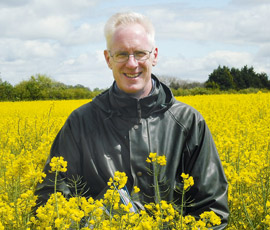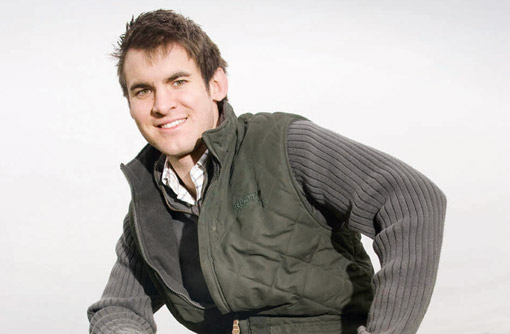OSR variety Troy offers big benefits but small stature

As the first semi-dwarf oilseed rape variety to match the performance of its taller cousins, Troy could offer growers both management and harvesting benefits.
The variety joined the HGCA Recommended list for 2013-2014, and some agronomists see it as a breakthrough with crop lodging seen as an increasing problem.
John Sweatman, trials manager at Troy’s plant breeder DSV, has grown the variety for the past three years and is quick to point out that it has a very different growth habit and physical appearance to other semi-dwarves.
“Most relevant to this year is the fact Troy doesn’t exhibit any of the early sluggishness reported with previous semi-dwarves,” he says.
The variety seems to have the autumn vigour seen with the best standard-sized hybrids which is key to getting a target population of 35-40 plants/sq m in the spring, he explains.
“It also helps it cope with less than optimum soil conditions, late drilling and bad weather – things which were all an issue last autumn,” he adds.
Two distinct phases of vigour have been observed in the field. The first is in the autumn period, which gets the crop established and allows it to grow away from pest attacks such as from pigeons.
The second is after winter, and this spring “kick” sees the plants growing quickly to 1.3-1.4m.
Mr Sweatman say the variety is taller than other semi-dwarves, but adds the extra height does seem to give it higher yield potential.
However, Troy never gets tall enough to be unmanageable or too prone to lodging, and its compact growth habit is a bonus when applying nitrogen or sprays.
Looking at lodging
Lodging was a serious problem for Derbyshire grower Rob Holmes last year, despite reducing the amount of nitrogen he applied to his oilseed rape crop in an effort to keep it standing.
Oilseed rape varieties often get ahead of themselves on his good land – which tends to carry a lot of residual nitrogen – and Mr Holmes has seen varieties getting too tall.
But 2012 was a real eye opener, with big name varieties suffering badly from lodging, and therefore for this season he has around 14ha of Troy in the ground.
“I’d looked at semi-dwarves before as a way round the problem, but wasn’t too impressed with their yield potential,” he admits.
The variety appealed because it should stay standing, regardless of soil nitrogen, and in addition its yield and gross output potential was equal to the top-yielding varieties.
Despite the wet autumn last year, Troy established well at an even plant population of 30-35 plants/sq m and like most other oilseed rape growers, Mr Holmes is now just waiting for a real spring to arrive so that the crop can start growing again.
Harvesting headaches
Standing power has become a priority for Lincolnshire grower Sam Markillie, but harvesting benefits are also high on his list of variety characteristics.
“Last year we had some issues with lodging, so standing power is important. But we’ve also found that the combining of our oilseed rape crops is getting increasingly difficult,” he says.
That’s because crops are often very tall, with green stems that the combines find difficult to handle, he explains.
“We find that time pressure at harvest causes us to raise the combine header to increase output. The downside is that we are left with waist-high stubble, which then creates difficulties with the following cultivations,” he says.
His decision to drill 32ha of Troy was taken before the variety had been recommended, but he was impressed by the combination of its compact growth habit and yield potential.
A semi dwarf variety should minimise harvest problems by its very nature, but the yield penalty was too great to contemplate these types before, he explains.
Pest problems
Swans are the main pest problem for Cambridgeshire oilseed rape grower Paul Hartley, who admits to having had crops severely damaged in previous years.

Paul Hartley believes smaller varieties of oilseed rape attract less attention from some pests.
“They’re attracted to large plants with a lot of top. So a small plant should suffer less. We’ve been keen to grow a semi dwarf variety for a while, but until now the performance hasn’t been there,” he says.
As a result, he has 20ha of Troy in the ground. “We couldn’t get hold of it last year, which was a shame. It’s the first semi-dwarf to match others for yield,” he adds.
He direct drills his oilseed rape crops into stubble, to try and deter both swans and pigeons as early attacks can be very detrimental and so the crop needs to be able to grow away quickly.
Further on we are hoping that its compact growth habit will give it protection from swans and allow it to remain standing. If so, we should get an easier and quicker harvest than last year.”
Keep up with the latest arable news

